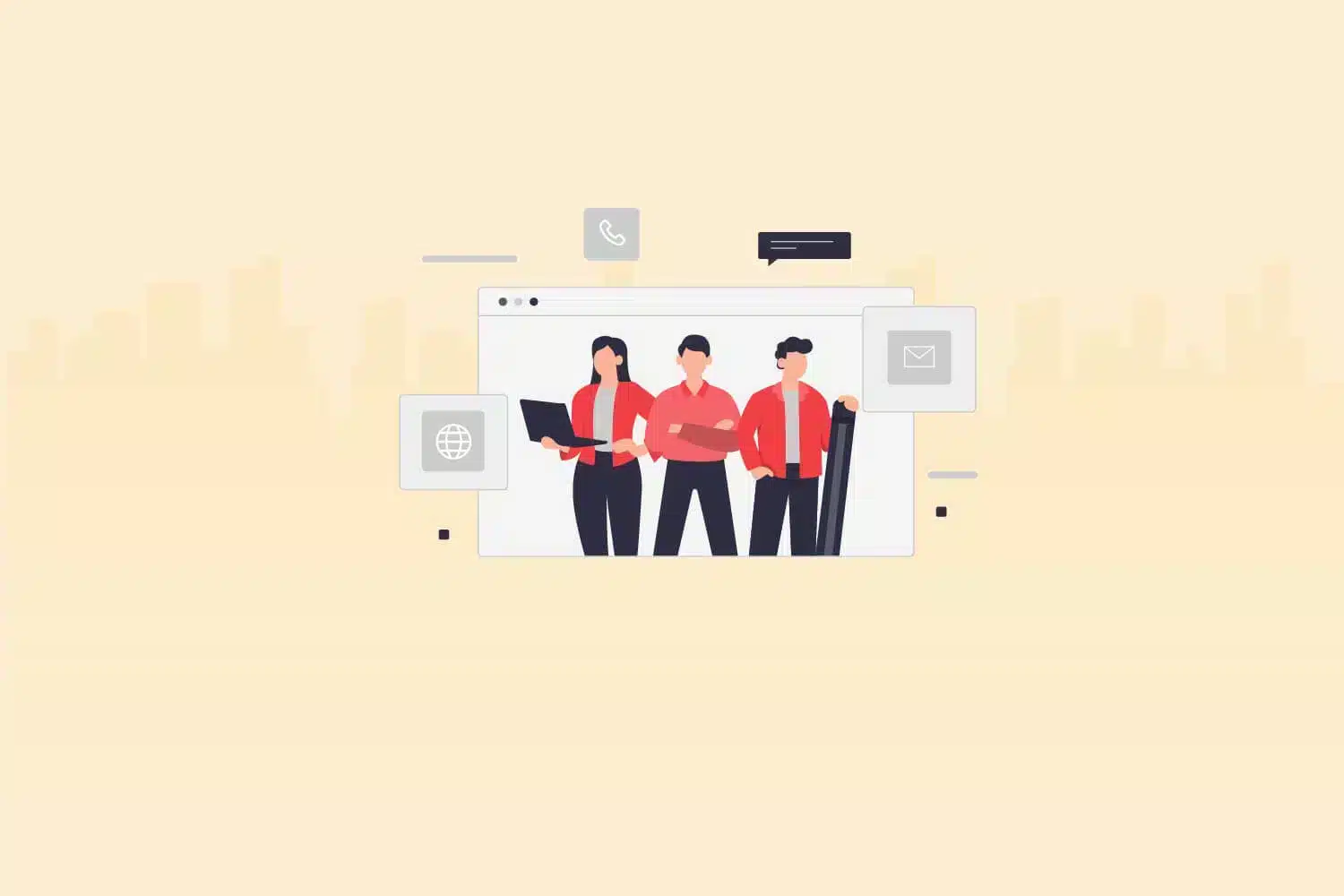Workplace culture is the lifeblood of any organization. It shapes the way employees interact, collaborate, and ultimately, how they perform. A thriving workplace culture fosters innovation, creativity, and employee well-being. On the flip side, a toxic culture can lead to high turnover rates and decreased productivity.
In today’s digital age, technology is not just a tool; it’s a catalyst for change. It has the power to transform workplace culture in ways we couldn’t have imagined a decade ago. From improving communication to enabling remote work and facilitating data-driven decision-making, technology is revolutionizing the way we work and interact with our colleagues.
In this blog, we’ll explore how to use technology to improve workplace culture. We’ll delve into various aspects of this transformative journey, from communication tools to employee engagement platforms and data-driven insights. Join us as we uncover the ways in which HR professionals and organizations can harness the power of technology to create a positive and thriving workplace culture.
Leveraging technology for enhanced workplace culture
In today’s fast-paced work environment, effective communication is the cornerstone of a healthy workplace culture. Leveraging technology can be a game-changer in this regard. Improved communication not only facilitates the exchange of ideas and information but also fosters a sense of belonging among employees.
Technology has introduced an array of communication tools that enable instant and seamless interactions. Chat applications, such as Slack and Microsoft Teams, provide a platform for real-time discussions and collaborations, irrespective of geographical barriers. Video conferencing tools like Zoom have become indispensable, bridging the gap between remote and in-office teams. These tools not only save time but also promote inclusivity, allowing employees to connect and engage regardless of their physical location.
Moreover, collaboration tools have transformed the way teams work together. Platforms like Google Workspace and Microsoft 365 offer shared documents and real-time editing, promoting teamwork and reducing the chances of miscommunication. Such tools streamline projects and enhance productivity, which, in turn, contributes to a positive workplace culture by reducing stress and boosting morale.
HR professionals play a vital role in harnessing these technologies. They are responsible for selecting the right tools, training employees to use them effectively, and establishing guidelines for digital communication etiquette. It’s essential to strike a balance between the convenience of technology and maintaining a personal touch in interactions.
In summary, technology has become an integral part of fostering a culture of effective communication and collaboration. HR departments need to embrace these digital tools and ensure that they are used in ways that enhance workplace culture, ensuring that employees feel connected, engaged, and heard in the digital age.
Remote work solutions
The landscape of work has evolved significantly, with remote work becoming increasingly prevalent. To improve workplace culture, organizations must embrace and optimize remote work solutions. Remote work, when implemented effectively, can contribute positively to workplace culture by offering employees flexibility and work-life balance.
Technology plays a pivotal role in enabling remote work. Cloud-based collaboration tools, virtual private networks (VPNs) for secure connections, and project management software have empowered employees to work from anywhere while staying connected to their teams. This flexibility can enhance workplace culture by accommodating diverse needs, such as those of parents, caregivers, or employees seeking a better work-life integration.
Human Resources (HR) departments have a critical role in establishing remote work policies and guidelines that balance flexibility with accountability. Clear expectations, communication channels, and the provision of necessary resources are essential aspects of remote work culture. HR can also provide training on remote work best practices, ensuring employees can navigate this digital landscape effectively.
However, remote work also presents challenges that can impact workplace culture if not addressed. Feelings of isolation, the blurring of work-life boundaries, and the potential for miscommunication can emerge in remote work settings. HR can mitigate these challenges by fostering a sense of belonging through virtual team-building activities, supporting mental health initiatives, and promoting a healthy work-life balance.
In conclusion, remote work solutions are integral to improving workplace culture in the modern era. When organizations leverage technology to facilitate remote work while addressing its challenges thoughtfully, they create an environment where employees can thrive both professionally and personally, ultimately contributing to a positive workplace culture.
Employee engagement platforms
Employee engagement is a cornerstone of a healthy workplace culture, and technology has brought about innovative solutions to bolster it. Employee engagement platforms have emerged as powerful tools to connect, motivate, and involve employees in the company’s mission and values.
These platforms offer a wide range of features, including surveys, feedback mechanisms, recognition programs, and performance management tools. Through regular surveys and feedback collection, organizations can gain valuable insights into employee sentiments, enabling them to make data-driven decisions to improve workplace culture. This data is often instrumental in identifying areas of improvement and recognizing positive aspects of the culture.
Recognition is another vital aspect of employee engagement platforms. These tools enable employees to acknowledge and appreciate their colleagues’ contributions publicly, fostering a culture of appreciation and camaraderie. Recognizing employees not only boosts morale but also reinforces the organization’s core values.
Furthermore, performance management tools within these platforms help set clear goals and expectations, facilitating transparent communication between employees and their managers. This transparency contributes to a sense of fairness and equity in the workplace, which are fundamental to a positive culture.
HR professionals play a central role in implementing and managing these platforms effectively. They need to choose the right software, customize it to the organization’s needs, and ensure that employees are trained to use it efficiently. Moreover, HR should analyze the data collected through these platforms to identify trends, address concerns, and proactively nurture a thriving workplace culture.
In summary, employee engagement platforms powered by technology have become indispensable in improving workplace culture. They facilitate open communication, recognition, and performance management, ultimately fostering an environment where employees feel valued and engaged in their work, leading to a stronger, more positive workplace culture.
Data-driven decision making
Data-driven decision-making is at the core of improving workplace culture through technology. In the modern business landscape, organizations are inundated with vast amounts of data, and HR departments are no exception. Technology has provided tools and platforms that enable HR professionals to collect, analyze, and leverage this data to make informed decisions that positively impact workplace culture.
One of the key areas where data-driven decision-making comes into play is in employee feedback and surveys. Through technology, HR can administer regular surveys to gather insights into employee satisfaction, engagement, and concerns. These surveys not only help in identifying areas that need improvement but also serve as a channel for employees to voice their opinions and feel heard, thereby enhancing their sense of belonging and engagement within the organization.
Moreover, HR analytics tools and platforms allow organizations to track and measure various aspects of workplace culture, such as diversity and inclusion, employee retention, and performance metrics. By analyzing this data, HR professionals can pinpoint areas where interventions are needed, whether it’s in refining diversity and inclusion policies, addressing high turnover rates, or recognizing high-performing teams and individuals.
Furthermore, data-driven decision-making is instrumental in setting and monitoring performance goals and expectations. Technology enables the creation of clear, measurable objectives, which can be tracked in real-time. This transparency fosters accountability and ensures that employees are aware of how their contributions align with the organization’s goals, enhancing motivation and teamwork.
In conclusion, technology-driven data analytics empowers HR professionals to make informed decisions that enhance workplace culture. By leveraging employee feedback, analyzing relevant metrics, and setting transparent performance expectations, organizations can create a culture of continuous improvement and accountability, ultimately leading to a more positive and productive workplace environment.
Training and development tech
Investing in the training and development of employees is not only crucial for individual growth but also plays a pivotal role in improving workplace culture. In this era of rapid technological advancement, organizations are increasingly turning to technology-driven solutions to enhance their training and development programs.
Technology-enabled learning, often referred to as e-learning, has revolutionized how employees acquire new skills and knowledge. Learning Management Systems (LMS) and online courses provide a flexible and accessible way for employees to upskill or reskill, regardless of their location or schedule. This flexibility aligns with the modern workforce’s desire for continuous learning and career advancement, contributing positively to workplace culture by fostering a culture of growth and development.
Personalization is another key benefit of training and development technology. These platforms can tailor learning paths to individual needs, ensuring that employees receive content relevant to their roles and goals. This personalization not only boosts engagement but also demonstrates that the organization values its employees’ professional development, thereby enhancing workplace culture.
Moreover, training tech allows for the integration of various multimedia formats, including videos, interactive simulations, and gamified learning experiences. This diversity in content delivery makes learning more engaging and enjoyable, contributing to a positive learning culture within the workplace.
HR professionals are tasked with selecting the right training and development technology solutions that align with the organization’s goals and culture. They must also monitor employee progress, evaluate the effectiveness of training programs, and make adjustments as necessary to ensure continuous improvement.
In summary, training and development technology is a valuable tool for improving workplace culture. By providing accessible, personalized, and engaging learning experiences, organizations can create an environment where employees feel empowered to grow and contribute, ultimately leading to a more positive and thriving workplace culture.
Feedback and recognition tools
Effective feedback and recognition mechanisms are vital components of a thriving workplace culture, and technology has introduced innovative tools to facilitate these processes. These tools empower organizations to create an environment where employees feel valued, acknowledged, and motivated to excel.
Feedback tools provide a structured platform for managers and peers to provide constructive feedback to employees. These digital platforms often include features like goal setting, performance evaluations, and regular check-ins. Technology enables real-time feedback, reducing the time gap between an action and feedback, which is crucial for employee development and growth. Timely feedback fosters a culture of continuous improvement and empowers employees to make meaningful contributions.
Recognition tools, on the other hand, provide a means to publicly acknowledge and celebrate employee achievements and contributions. These platforms enable colleagues to praise each other’s accomplishments, fostering a culture of appreciation and camaraderie. When employees receive recognition for their hard work and dedication, they are more likely to feel motivated and engaged, leading to a positive workplace culture.
Additionally, many of these tools offer analytics and reporting features, allowing HR professionals to track feedback trends, recognition patterns, and employee sentiment. This data-driven approach enables organizations to make informed decisions about employee development, rewards, and culture enhancement initiatives.
HR departments are pivotal in implementing and promoting feedback and recognition tools effectively. They must ensure that these tools align with the organization’s values and goals, and that employees are trained in their use. HR professionals can also play a role in guiding managers on providing constructive feedback and recognizing employees consistently.
In conclusion, feedback and recognition tools driven by technology are powerful assets for improving workplace culture. By fostering open communication, acknowledging achievements, and providing data-driven insights, these tools contribute to an environment where employees feel valued, motivated, and engaged, ultimately resulting in a more positive and thriving workplace culture.
Cybersecurity and privacy concerns
In the era of technology-driven workplace culture improvement, it is paramount to address the significant concerns surrounding cybersecurity and privacy. While leveraging technology can undoubtedly enhance workplace culture, it also brings forth risks that organizations and HR departments must mitigate effectively.
First and foremost, data security is a primary concern. With the increasing amount of sensitive employee data being stored and processed digitally, organizations become lucrative targets for cyberattacks. HR departments must implement robust cybersecurity measures to safeguard this data, including encryption, access controls, and regular security audits. Ensuring the confidentiality and integrity of employee information is crucial to maintaining trust within the workplace.
Moreover, privacy concerns come into play when using technology for workplace culture improvement. Employees may worry about the extent to which their personal information is being monitored or collected. HR professionals should be transparent about data collection practices and ensure they comply with relevant privacy regulations, such as GDPR or CCPA, to protect employee privacy rights.
Another aspect to consider is the ethical use of technology. HR should strike a balance between collecting data for legitimate purposes, like improving workplace culture, and respecting employees’ right to privacy. It’s essential to use technology responsibly and avoid invasive surveillance practices that could erode trust and morale.
Additionally, HR teams should be prepared to respond effectively to data breaches or privacy incidents. Having an incident response plan in place, which includes notifying affected individuals promptly, can help mitigate the damage to both the organization’s reputation and workplace culture.
In conclusion, while technology can be a powerful tool for enhancing workplace culture, organizations and HR departments must remain vigilant in addressing cybersecurity and privacy concerns. Prioritizing data security, respecting employee privacy rights, and acting ethically are essential steps to ensure that technology-driven culture improvement initiatives do not compromise the trust and well-being of employees.
Conclusion
In the ever-evolving landscape of work, technology continues to be a driving force for change. As we conclude our exploration of how to use technology to improve workplace culture, it’s clear that the role of HR professionals and organizational leaders has never been more crucial. The digital tools and platforms at our disposal are powerful, but it’s the people behind them who truly make the difference.
By leveraging technology for communication, fostering remote work solutions, embracing employee engagement platforms, and making data-driven decisions, we have the opportunity to shape workplace cultures that inspire, motivate, and empower our teams. The journey to a better workplace culture is ongoing, and it requires a commitment to using technology responsibly and creatively.
As we move forward, let’s remember that technology is a tool, but the heart of a positive workplace culture lies in our values, our actions, and our dedication to the well-being of our employees. With the right blend of technology and human touch, we can create workplaces where people thrive, collaborate, and achieve their fullest potential. It’s a journey worth embarking upon, for the benefit of both individuals and the organizations they serve.
Transform your hiring process with Testlify – the efficient solution for HRs, founders, and recruiters. Save time and resources while finding the best-fit candidates. Get started today!








